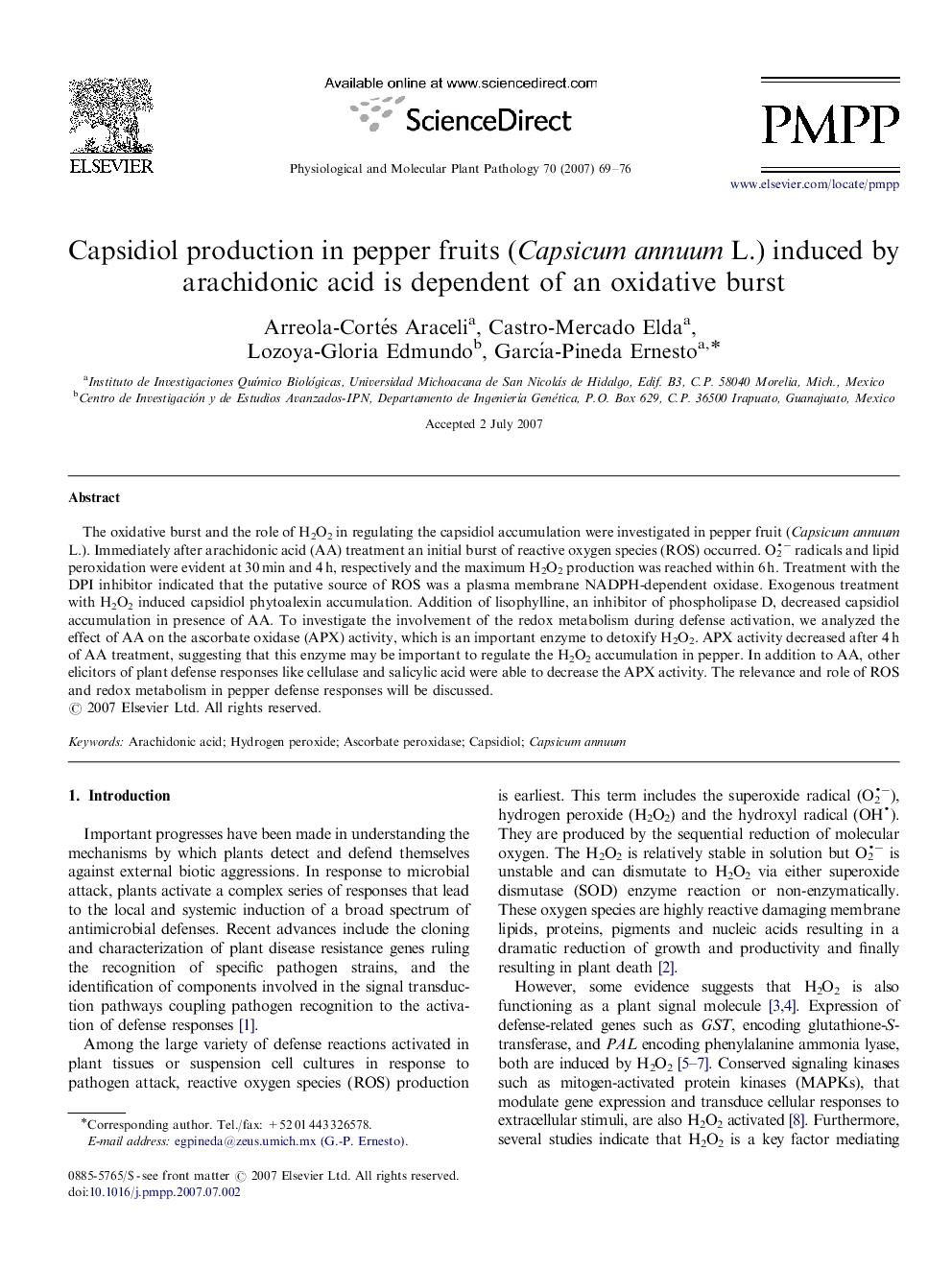| Article ID | Journal | Published Year | Pages | File Type |
|---|---|---|---|---|
| 2836748 | Physiological and Molecular Plant Pathology | 2007 | 8 Pages |
The oxidative burst and the role of H2O2 in regulating the capsidiol accumulation were investigated in pepper fruit (Capsicum annuum L.). Immediately after arachidonic acid (AA) treatment an initial burst of reactive oxygen species (ROS) occurred. O2− radicals and lipid peroxidation were evident at 30 min and 4 h, respectively and the maximum H2O2 production was reached within 6 h. Treatment with the DPI inhibitor indicated that the putative source of ROS was a plasma membrane NADPH-dependent oxidase. Exogenous treatment with H2O2 induced capsidiol phytoalexin accumulation. Addition of lisophylline, an inhibitor of phospholipase D, decreased capsidiol accumulation in presence of AA. To investigate the involvement of the redox metabolism during defense activation, we analyzed the effect of AA on the ascorbate oxidase (APX) activity, which is an important enzyme to detoxify H2O2. APX activity decreased after 4 h of AA treatment, suggesting that this enzyme may be important to regulate the H2O2 accumulation in pepper. In addition to AA, other elicitors of plant defense responses like cellulase and salicylic acid were able to decrease the APX activity. The relevance and role of ROS and redox metabolism in pepper defense responses will be discussed.
